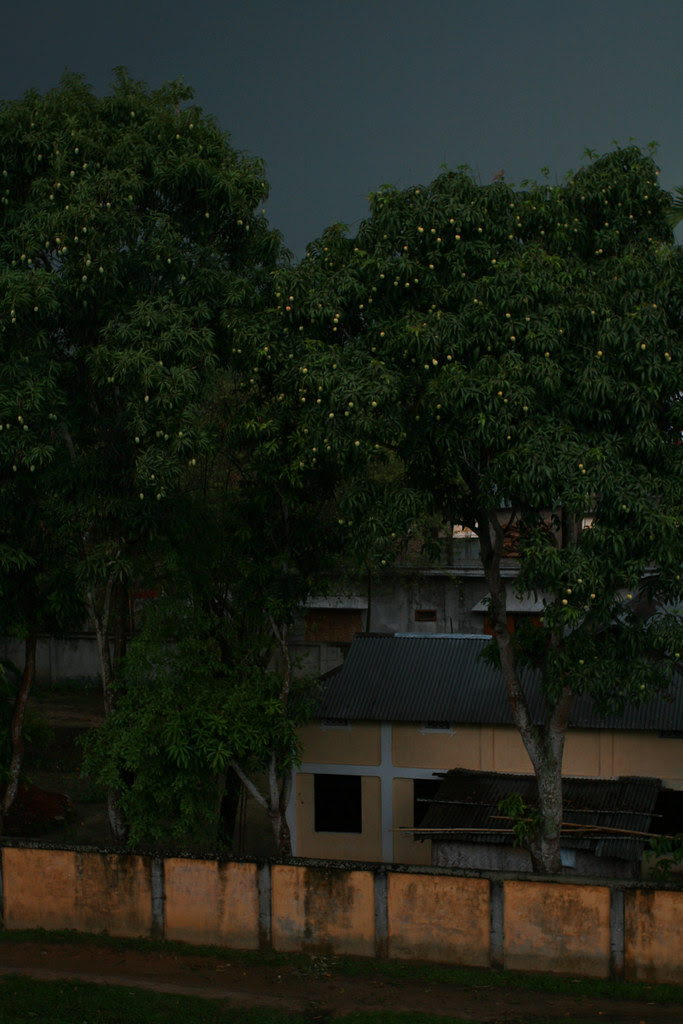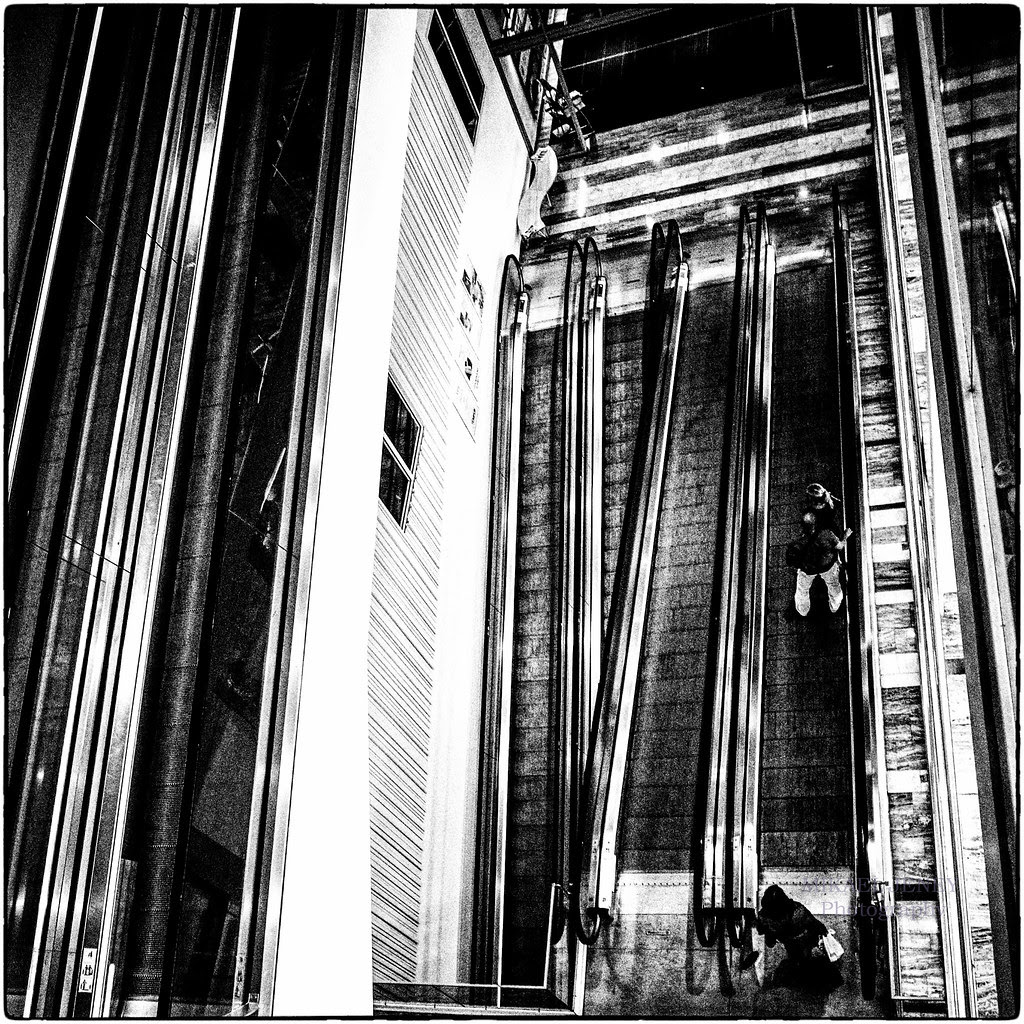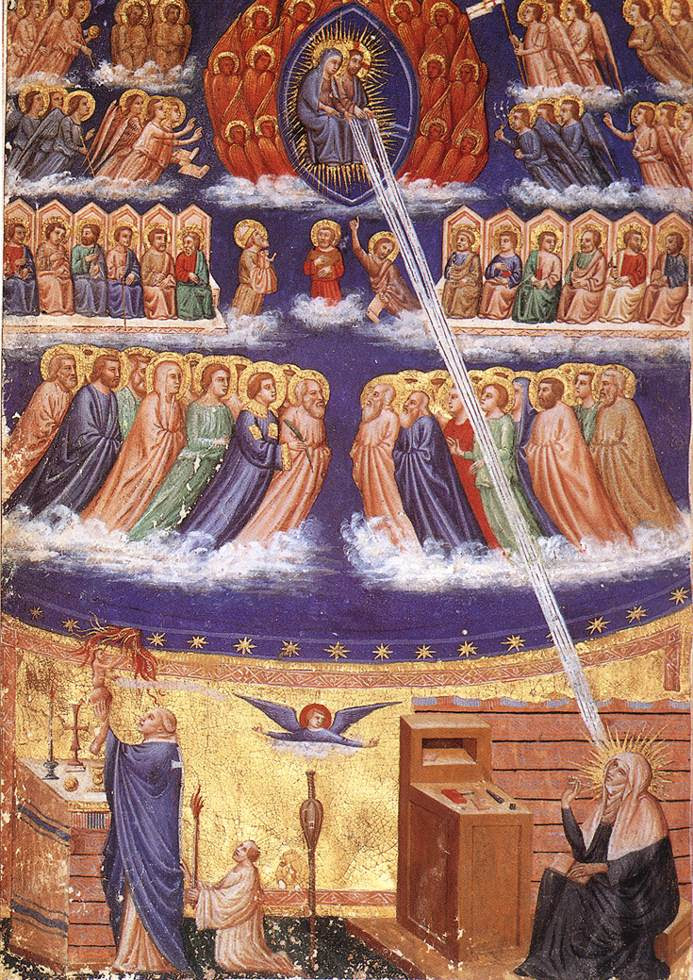
Room used as a mosque inside Rikers Island Prison: photo by Associated Press, 16 May 2007)
The brother to the dog who ate the newspaper was
also the father of the dog who trekked through
five states to reach home on its own
and whose great grandfather sniffed contraband on
New York's pier when the
Excelcius drew near the wharf filled with
opium and ripped the pilings and three men drowned
on a disaster Tuesday long forgotten except by the
longshoreman's great grandchildren who have
problems of their own
And angels rise in continuous sheets not only
behind these scenes but also
straight up through their centers
to a music barely caught by strings or tiny pianos or bells
and the dogs in this piece however doggedly
and the dogs in this piece however doggedly
doggy they are chasing squirrels and other dogs
know the music in their inner ear and you can see them almost
enviously following the upward arc of angels
from time to time
with their dark wet eyes
..............................
..............................
Daniel Abdal-Hayy Moore: The Brother to the Dog, from Stories Too Fiery To Sing Too Watery To Whisper (13 June-24 October 2005), The Ecstatic Exchange, 2014

Head of an angel: Piero della Francesca, 1460, San Francesco, Arezzo (image by Sailko, 2009)
He
was, however, impersonal, not in his method only, as all great artists
have to be, but he was what would be commonly called impassive, that is
to say, unemotional, in his conceptions as well. He loved
impersonality, the absence of expressed emotions, as a quality in
things.
Bernard Berenson, Italian Painters of the Renaissance, 1897

St. Julian: Piero della Francesca, 1455-1460, Pinacoteca Communale, Sansepolcro (image by Sailko, 2009)

Mangoes #9a: After the Fruit Bats: photo by Like Jazz, 4 January 2010

Mangoes #10a: After the Fruit Bats: photo by Like Jazz, 4 January 2010
Dome of the Rock, Jerusalem, interior. (Original caption: BENEATH THE DOME OF THE MOSQUE OF OMAR. Under this gorgeous dome, with its superb mosaics of Arabesque design, seen only in the subdued light which filters in through the ancient stained glass windows, is a great black rock, the summit of Mount Moriah, part of the threshing floor of Ornan, the Jebusite. I Chron xxi and xxii): photo and cation from National Geographic Magazine, March 1914; image by Mattes, 11 April 2006

Mango trees during a storm, Srimongal, Syrhet, Bangladesh: photo by s_karr, 13 May 2009

Chinvat Bridge, Gallicanta, Montemolin, Extremadura: photo by Angel (Angel. G-), 23 July 2004
It is not in the power of a human being to destroy his celestial
Idea; but it is in his power to betray it, to separate himself from it,
to have, at the entrance to the Chinvat Bridge, nothing face to face
with him but the abominable and demonic caricature of his 'I' delivered
over to himself without a heavenly sponsor.
Henry Corbin (1903-1978): The Paradox of Monotheism, 1976

The Path from Endarkenment (Beckton Park, London): photo by Ian Tindale, 28 August 2008
Every
physical or moral entity, every complete being or group of beings
belonging to the world of Light...has its Fravarti. What they announce
to earthly beings is...an essentially dual structure that gives to each
one a heavenly archetype or Angel, whose earthly counterpart he is.
Corbin: Spiritual Body and Celestial Earth, 1977

[Untitled]: photo by Prof Alex O Chevtchenko, 9 May 2012
The history of the modern West is the history of "l'homme sans Fravarti."
Corbin: The Paradox of Monotheism
Corbin: The Paradox of Monotheism

NK Mall (Stockholm): photo by Mikael Jeney, 1 September 2012
It
is this Fravarti which gives its true dimension to the person. The
human person is only a person by virtue of this celestial dimension,
archetypal, angelic, which is the celestial pole without which the
terrestrial pole of his human dimension is completely depolarized in
vagabondage and perdition.
Corbin: The Paradox of Monotheism
Corbin: The Paradox of Monotheism

In Line (Stockholm): photo by Mikael Jeney, 29 August 2012
I saw myself present in a world of light. Mountains and deserts were iridescent
with lights of all colours... I was experiencing a consummate nostalgia for
them; I was as though stricken with madness and snatched out of myself by
the violence of the intimate emotion and feeling of the presence. Suddenly
I saw that the black light was invading the entire universe. Heaven and Earth
and everything that was there had wholly become black and, behold, I was totally
absorbed in this light, losing consciousness. Then I came back to myself.
A Persian Sufi, Lahiji, quoted in Corbin: The Man of Light in Iranian
Sufism, 1971

Summer, Gallicanta: photo by Angel (Angel. G-), 23 July 2004
...to leave this world, it does not suffice to die. One can die and
remain in it forever. One must be living to leave it. Or rather, to be
living is just this.
Corbin: Cyclical Time in Ismaili Gnosis, 1983
Vault (southwest section): Italian mosaic artist, 1240-1400, mosaic, Baptistry, Florence

Revelations of St Bridget of Sweden: Italian miniaturist, c. 1400, illumination on parchment, 268 x 190 mm (The Morgan Library and Museum, New York)

What a wet day - so we made the most of it! #wetdog #followthepaw: image via Police Pup Asco @No1GhostDog, 25 April 2014
PD Wilbur's just had a bath, he doesn't look too happy about it either #wetdog: image via Derbys Dog Section @DerbysDogPolice, 20 May 2014


...to leave this world, it does not suffice to die ... One must be living to leave it.
ReplyDeleteAstonishing how rarely one meets a person who's managed to actually live before leaving. Including the meetings in the mirror, of course.
And Abdal-Hayy Moore, Corbin, Zoroaster, Piero - more new and wonderful discoveries, individually, and in this constellation. Thanks Tom.
Many thanks, Barry.
ReplyDeleteThe way this poem seems to pause halfway through its mysterious, intriguing narrative, and fold into itself, or explode out of itself, so that in the second half something completely unexpected happens, has had me lying awake thinking about it, these past I can't count how many nights.
Well, maybe three or four. But just saying -- how many nights are there in a life?
Tom - Yes, I can see how your elaboration of the poem is a puzzling away at that hinge of the narrative. The point of folding-in / exploding-out, of the celestial into/out of the mundane arrives with the crashing of the not-quite-liturgical Excelsior into the lives of the longshoremen, doesn't it? That's the catastrophe that releases angels into the poem. Dogs and poets, maybe, catch a glimpse of the latter's vapor-trails before the air settles again.
ReplyDeleteI love the traces of those fruit bats and then imagine them rising in their own continuous sheets.
ReplyDeletePiero's paintings (and Berenson's remarks) bring to mind the Jesuit notion of indifference: the way to catch sight of the world's true light and shade.